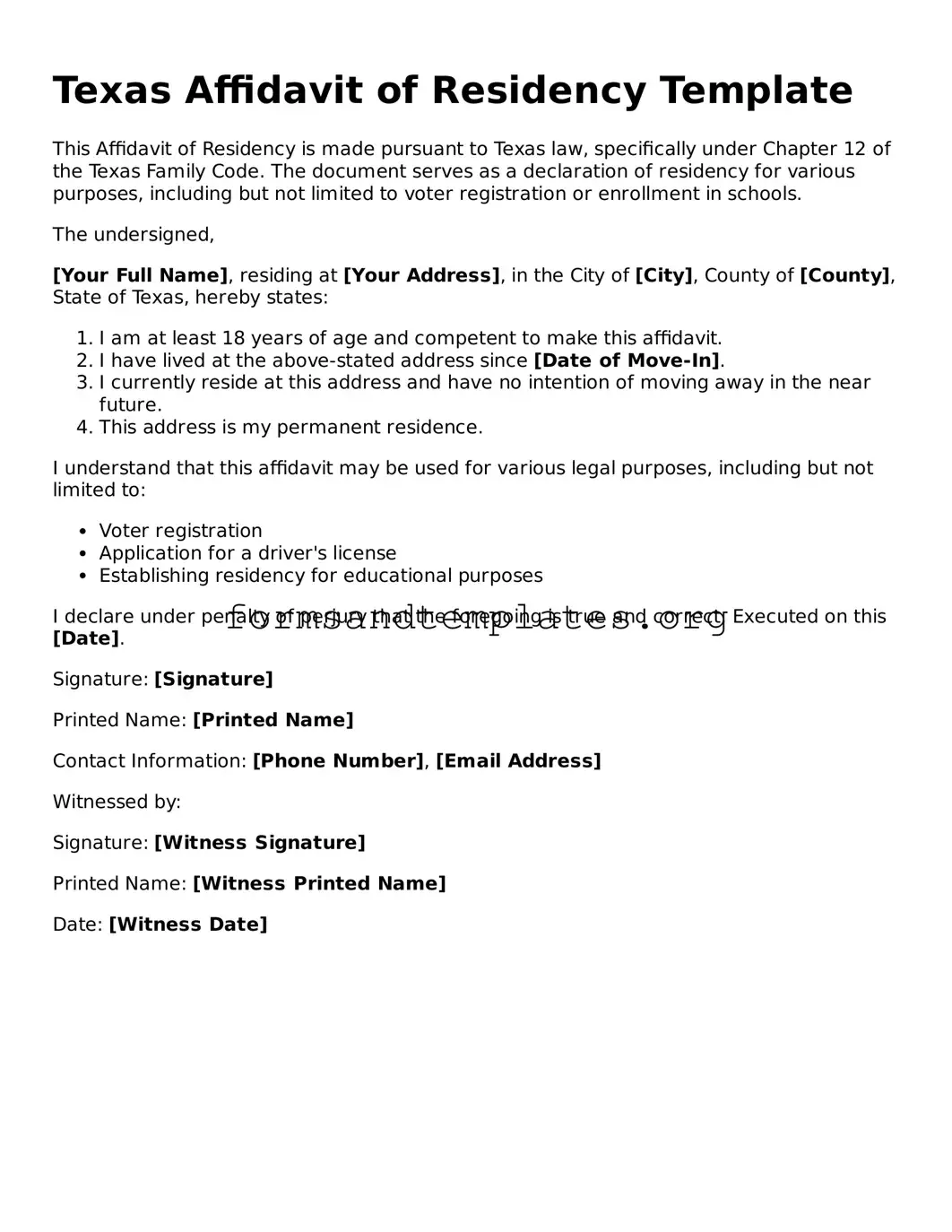Texas Affidavit of Residency Template
This Affidavit of Residency is made pursuant to Texas law, specifically under Chapter 12 of the Texas Family Code. The document serves as a declaration of residency for various purposes, including but not limited to voter registration or enrollment in schools.
The undersigned,
[Your Full Name], residing at [Your Address], in the City of [City], County of [County], State of Texas, hereby states:
- I am at least 18 years of age and competent to make this affidavit.
- I have lived at the above-stated address since [Date of Move-In].
- I currently reside at this address and have no intention of moving away in the near future.
- This address is my permanent residence.
I understand that this affidavit may be used for various legal purposes, including but not limited to:
- Voter registration
- Application for a driver's license
- Establishing residency for educational purposes
I declare under penalty of perjury that the foregoing is true and correct. Executed on this [Date].
Signature: [Signature]
Printed Name: [Printed Name]
Contact Information: [Phone Number], [Email Address]
Witnessed by:
Signature: [Witness Signature]
Printed Name: [Witness Printed Name]
Date: [Witness Date]
